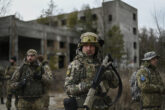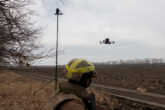May 05, 2017
Lessons from the QDDR for Secretary Tillerson’s Reorganization of the State Department
Secretary of State Rex Tillerson last week announced that he is launching a new initiative to reorganize the State Department. In launching this initiative, Tillerson is walking a well-trod path: Every secretary of state since at least 1993 has sought to reorganize the department, usually with mixed success. Tillerson will face additional challenges in his bid to transform the department, in the form of the large cuts that President Trump has proposed to State’s budget that would impact the department’s staffing and programs.
As a member of the State Department’s Policy Planning Staff from 2009 to 2012, I worked on Secretary Hillary Clinton’s initiative to reorganize and modernize the department, the Quadrennial Diplomacy and Development Review (QDDR). We spent more than a year studying the past, evaluating needs, consulting with stakeholders in and out of government, and developing recommendations for Clinton to consider. We achieved a number of victories, including expanding the department’s focus on economic issues and improving the performance of foreign assistance programs. But we also missed the mark in places and saw some of the reforms recommended by the QDDR founder in the face of bureaucratic opposition. Lessons from our experience can help Tillerson and his team as they launch their bid to transform America’s oldest cabinet department.
Lesson 1: Move fast.
Tillerson is smart to announce the reorganization initiative early in his tenure and prior to appointing many of the department’s senior officials. While Tillerson has come under fire for the slow pace of State Department appointments, he correctly understands that reorganizing the department will be much more difficult once Senate-confirmed officials are in place. By the time Clinton released the QDDR in late 2010, entrenched officials were able to block some of the more ambitious reorganization proposals under consideration and, given the length of the federal budget process, State and USAID budgets had already been set for most of Secretary Clinton’s tenure. Tillerson should set an ambitious goal of completing his review within 120 days so that State can begin implementing changes by the time the next federal fiscal year begins in October.
Lesson 2: Empower the bureaus.
Both Secretary Clinton and Secretary John Kerry expanded the number of State Department “special envoys” and other ad-hoc offices tasked with handling specific issues, ranging from global climate negotiations to fighting ISIS. Ad-hoc envoys represent a quick-and-easy tool to focus on an emerging issue and coordinate resources spread across the department, but the proliferation of envoys has led to confusion about who is in charge of issues, “envoy fatigue” among department staff, and growing bickering between the envoys and other parts of the department. Tillerson should slash the number of envoys, keeping only those needed to handle issues that simply cannot fit within a standing bureau. When new crises arise that call for the creation of a new ad-hoc envoy, such as the rise of ISIS did in 2014, Tillerson should make clear that he expects that new envoy offices will be time-limited in duration and that their functions will eventually return to the department’s standing bureaus.
Lesson 3: Streamline and establish clear lines of authority.
The State Department is a large organization with more than 30 bureaus; dozens of freestanding offices; and more than 300 embassies, consulates, and diplomatic missions overseas. Many of the State Department’s inefficiencies are the result of too many of these disparate parts of the department working on the same set of issues without clear decision-makers or lines of authority. Deciding on a course of action for even a routine diplomatic issue can easily require the agreement of six or seven different State bureaus and offices, plus the relevant embassies overseas. Reaching agreement slows action and encourages lowest-common-denominator decision-making in which different parts of the department agree to a policy whose primary virtue is that it is blandly unobjectionable, rather than a sharp policy that would more effectively serve U.S interests. It also means that department employees spend time and effort resolving internal differences rather than executing on policy. Tillerson should identify duplicative offices and functions within the Department and consolidate them while naming clear “lead offices” for issues that are empowered to resolve internal disputes and speed decision-making.
Lesson 4: Don’t focus on just the State Department and USAID.
Today, the Justice, Treasury, Energy, and Commerce Departments all play important roles in executing American foreign policy alongside State, USAID, and the Department of Defense. Even agencies like the Agriculture Department and Environmental Protection Agency today have a significant overseas presence.
The growing international role of these agencies has created redundancies in roles and bureaucratic tensions between State and other departments. The last time there was a major realignment of foreign policy functions across federal agencies was in 1997, when President Clinton consolidated the Arms Control and Disarmament Agency and the U.S. Information Agency into State. Tillerson has an opportunity to work with colleagues in the cabinet to reduce redundancy, save money, and improve efficiencies by transferring functions to other departments while consolidating others at State. For example, Tillerson could move some of the State Department’s sanctions designations work to Treasury, which already has several hundred employees working on sanctions programs, while consolidating the Commerce Department’s export promotion functions at State, where State can leverage its overseas embassies to more effectively advocate for U.S. exports.
Lesson 5: Fight for flexibility in hiring, particularly mid-career Foreign Service hires.
One of the State Department’s major human capital challenges is its limited ability to hire mid-career professionals, particularly into the Foreign Service. Past secretaries have generally refrained from fighting to expand mid-career hiring authorities in the face of stiff internal opposition, and as a result State remains largely unable to recruit talented mid-career professionals to work at U.S. embassies overseas. Improving the department’s ability to hire people from high-tech and scientific backgrounds, NGOs, and corporations would bring new and complementary skill sets into the foreign service that would strengthen the Department over time and serve as a legacy issue for Tillerson’s reforms. Tillerson, who was widely regarded as one of the most effective American executives during his tenure as CEO of ExxonMobil, is about to discover that the challenges of reorganizing a federal agency is quite different from a corporate reorganization. He will have to deal with a diverse set of stakeholders, arcane federal rules, and budgets that require congressional approval. But by studying his predecessors’ efforts to reform State, Tillerson can increase the odds that he will succeed in modernizing the department he now leads.
More from CNAS
-
Defense / Transatlantic Security
When Defense Becomes Destruction: Austria-Hungary’s Mistake and Ukraine’s RiskThis article was originally posted on War on the Rocks. The southeastern Polish city of Przemyśl, with its elegant 19th century Habsburg-era train station, remains one of the ...
By Franz-Stefan Gady
-
Defense / Transatlantic Security
Ukraine’s Catch-22 MomentThis article was originally published in the Financial Times. In Joseph Heller’s wartime classic, Catch-22, the protagonist Yossarian seeks out the US army surgeon Doc Daneeka...
By Franz-Stefan Gady
-
CNAS Insights | Budgetary Own Goals Undermine “Speed and Volume”
On November 7, Secretary of Defense Pete Hegseth laid out a plan to overhaul the Department of Defense’s (DOD’s) acquisition system. Placing an emphasis on delivering new capa...
By Philip Sheers, Carlton Haelig & Stacie Pettyjohn
-
Drones: Who Is Making the New Weapons of War?
From Ukraine and Russia to Gaza and Sudan, drones have become a key weapon of war. Which companies are making them, and profiting from this rapidly expanding but controversial...
By Stacie Pettyjohn




